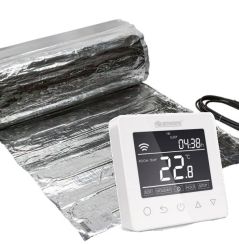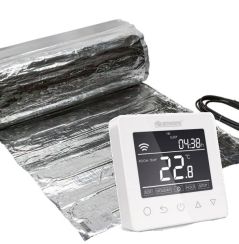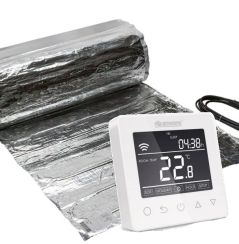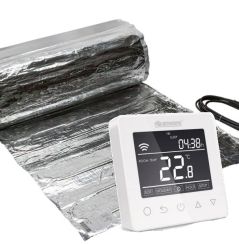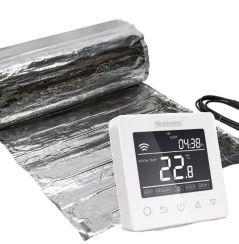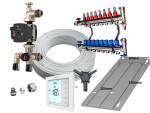Underfloor Heating Mats
Our electric underfloor heating mats provide an efficient and easy installation for warming your home. Each mat can be paired with underfloor heating components. Ideal for various floor types, our electric underfloor heating mats offer consistent and comfortable warmth, making them perfect for kitchens, bathrooms, and living spaces. Simplify your project with our electric heat mats and enjoy simple, effective heating.
- Electric Foil Underwood Heating Mat 1m2Regular Price £55.00 Incl. Vat: Special Price £44.34 £36.95
- Electric Foil Underwood Heating Mat 2m2Regular Price £89.99 Incl. Vat: Special Price £71.99 £59.99
-
- Electric Foil Underwood Heating Mat 4m2Regular Price £128.99 Incl. Vat: Special Price £103.19 £85.99
- Electric Foil Underwood Heating Mat 5m2Regular Price £157.00 Incl. Vat: Special Price £125.59 £104.66
- Electric Foil Underwood Heating Mat 6m2Regular Price £187.00 Incl. Vat: Special Price £149.59 £124.66
- Electric Foil Underwood Heating Mat 7m2Regular Price £215.99 Incl. Vat: Special Price £172.79 £143.99
- Electric Foil Underwood Heating Mat 8m2Regular Price £232.00 Incl. Vat: Special Price £185.59 £154.66
- Electric Foil Underwood Heating Mat 9m2Regular Price £250.99 Incl. Vat: Special Price £200.78 £167.32
- Electric Foil Underwood Heating Mat 10m2Regular Price £271.00 Incl. Vat: Special Price £216.79 £180.66
- Electric Foil Underwood Heating Mat 11m2Regular Price £346.99 Incl. Vat: Special Price £239.18 £199.32
- Electric Foil Underwood Heating Mat 12m2Regular Price £373.19 Incl. Vat: Special Price £254.39 £211.99
Efficient Electric Underfloor Heating Mat
Our electric underfloor heating mats offer a practical and straightforward way to heat your home. Each mat provides everything you need for a smooth installation. You can pair them with any underfloor heating components, including conduit and thermostat.
Our mats are designed to work with various floor types, making them an excellent choice for kitchens, bathrooms, and living areas. Make your installation project accessible with our all-inclusive kits and experience efficient, trouble-free heating.
Get the most out of you underfloor heating with electric heating mats
The low profile underfloor heating design means that you can install the mat beneath your flooring, out of sight and out of the way. It's not just easy to install; it's even easier to use, making it the perfect way to keep your larger rooms warm and comfortable all year round.
Perfect for large rooms such as living rooms, dining rooms, or even offices. The mat unrolls easily, and the cables are fitted within it, so you don't have to worry about spacing them apart. Keep in mind that the cables cannot be cut or shortened, so you need to measure your space as accurately as possible.









